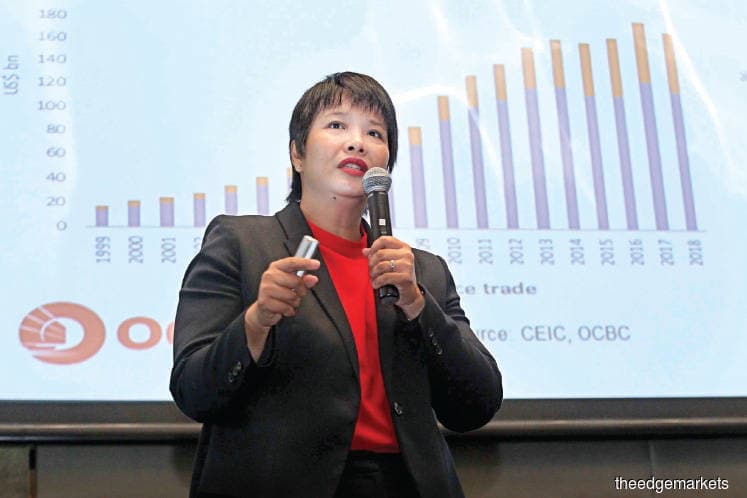
This article first appeared in The Edge Financial Daily on January 16, 2020
KUALA LUMPUR: Malaysia’s gross domestic product (GDP) growth target of 4.8% for 2020 will be challenging to achieve, says OCBC Bank, which is expecting growth to come in around 4.2% to 4.4% instead.
The bank remains cautious about the country’s growth prospects as external headwinds and geopolitical uncertainties remain, said OCBC chief economist cum head of treasury research and strategy Selena Ling.
“Actually, we are a little cautious. I would say that the biggest challenge to [achieving the] GDP target is still the external environment.
“We think that [hitting] 4.8% is a little bit challenging because it would assume that everything falls into place nicely,” she told reporters after presenting the bank’s 2020 economic outlook yesterday.
The “everything” she was referring to includes the de-escalation and stabilisation of US-China trade tensions for the rest of the year, which is anticipated to allow global growth a chance to recover.
It is also based on the assumption that no drastic measures will be taken by China to counter US pressures, which would help shape a more stable and calm market environment for the rest of Asia throughout 2020.
“If any of these jigsaw puzzles doesn’t fall into place, then there is a risk of slippage, and that is probably true not just for Malaysia, but for any other Asean countries,” Ling said.
She also noted consumption did much of the heavy lifting last year in terms of driving growth.
“If the domestic consumer sentiment is on a softening path, then there is a likelihood that the growth may not be as strong as what it was in the past.
“And even for the liquidity and investments that are coming in, these are very sentiment-driven … Only in an environment when things are a little bit calmer, then investors will start looking for higher yielding [markets],” she said.
Signs of support
Nonetheless, the economist highlighted several signs of support for the Malaysian economy.
While the 5.5% year-on-year contraction in November exports was a bit of a let-down versus the market’s expectation of a flat growth, Ling said there is hope that with the detente between the US and China will lead to a pick up in global trade and help Malaysian exporters.
Ling also pointed at Malaysia’s Purchasing Managers’ Index — a composite single-figure indicator of the country’s manufacturing performance — which has finally returned to a neutral 50-point reading in December, after having been contractionary for months before that.
If the improvement sustains itself, this should bode well for the country’s overall exports sector, said Ling, adding Malaysia’s exports growth may recover to 4% to 5% in 2020, from an expected 2% contraction in 2019.
Ling also noted that the country has managed to gradually rebuild its foreign exchange reserves, amid favourable capital flows. At US$103.6 billion as at the end of December 2019, the reserves are sufficient to finance 7.5 months’ worth of retained imports and 1.1 times of short-term external debt.
Foreign holdings of Malaysian Government Securities now stand at 41.6% — its highest since mid-2018 — supported by the global low-rate environment, anchored by a relatively dovish US Federal Reserve.
“Overall, the supportive environment has contributed to the recent strengthening of the ringgit against the dollar. We expect the ringgit to reach around 4.04-level by the end of 2020,” she explained. At the time of writing, the local currency was trading at 4.0765 against the greenback.
Chance for OPR cut in 1H20
Meanwhile, Ling said there is a chance for another 25 basis points cut in the overnight policy rate (OPR) to 2.75% in the first half of 2020 (1H20), as it expects Bank Negara Malaysia (BNM) to retain a dovish bias and trim the rate should the global economy fail to become more supportive of the country’s exports.
The OPR was last cut in May 2019, to 3% from 3.25%.
“While inflation may pick up next year because of fuel subsidy rationalisation, there remain some room for the central bank to cut rates.
“But for BNM, there is no urgency to cut [rates] per se. They are clearly in a wait-and-see mode, just like a lot of the major and Asian central banks,” she added.